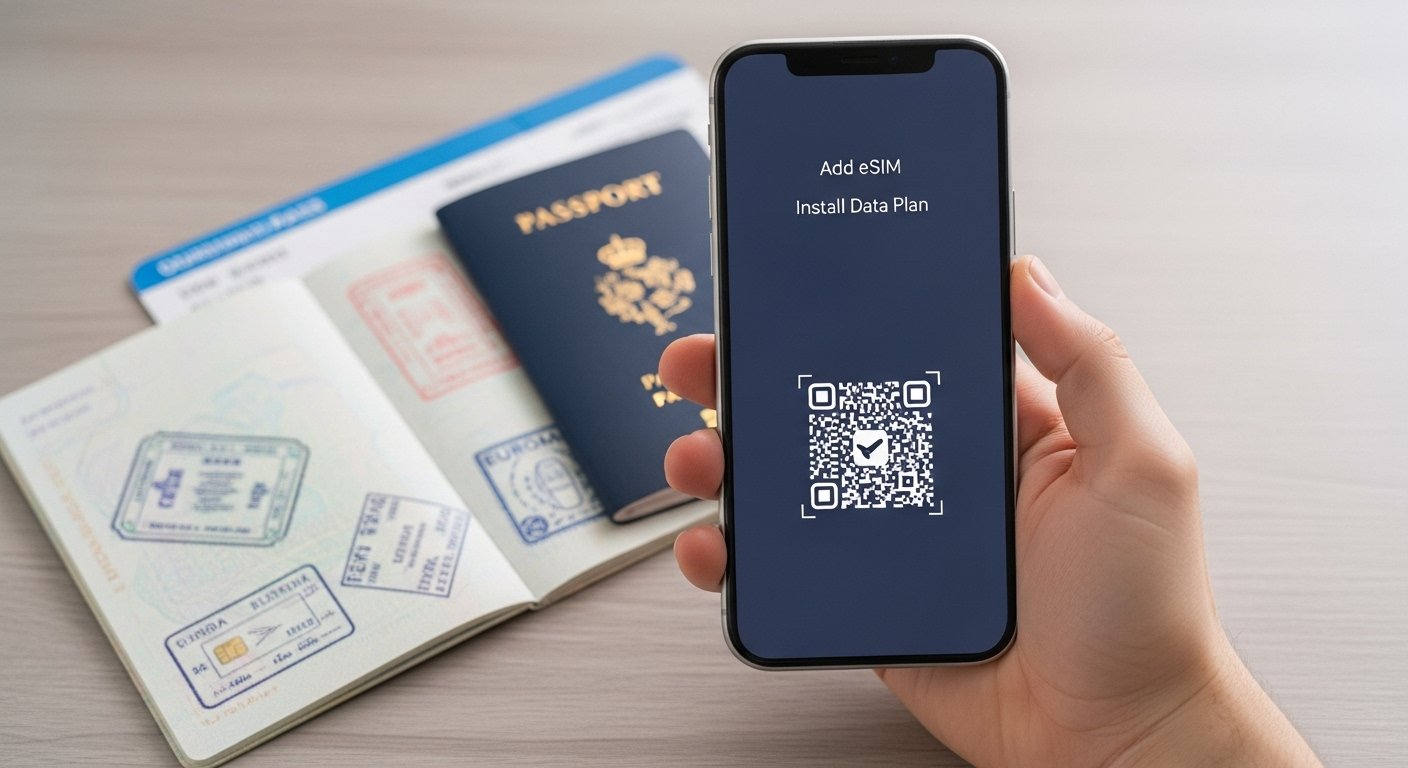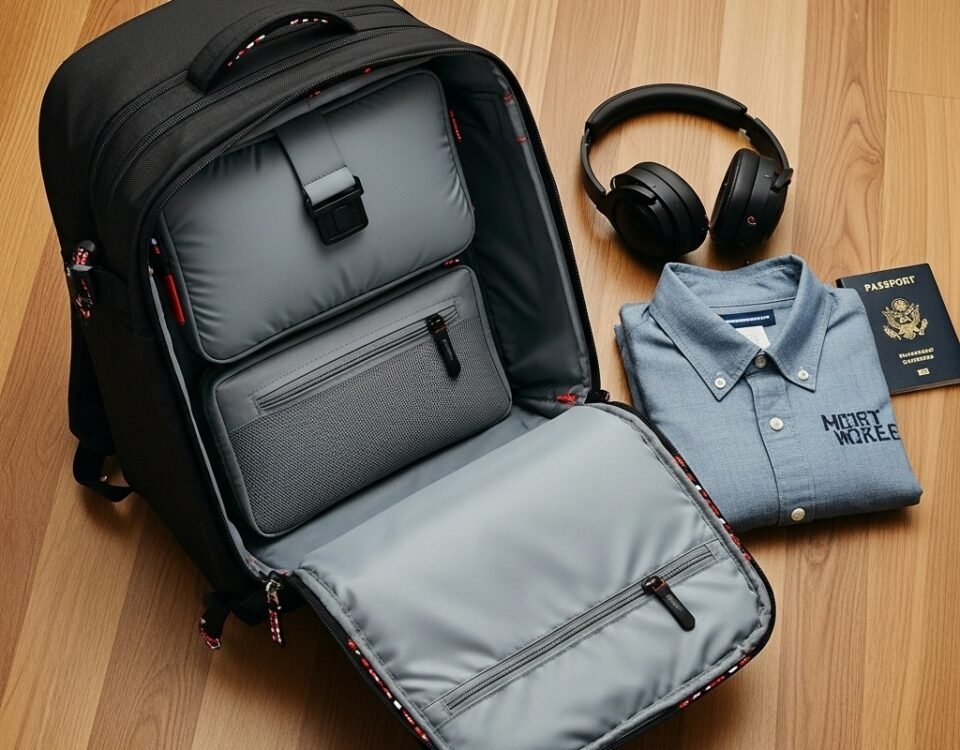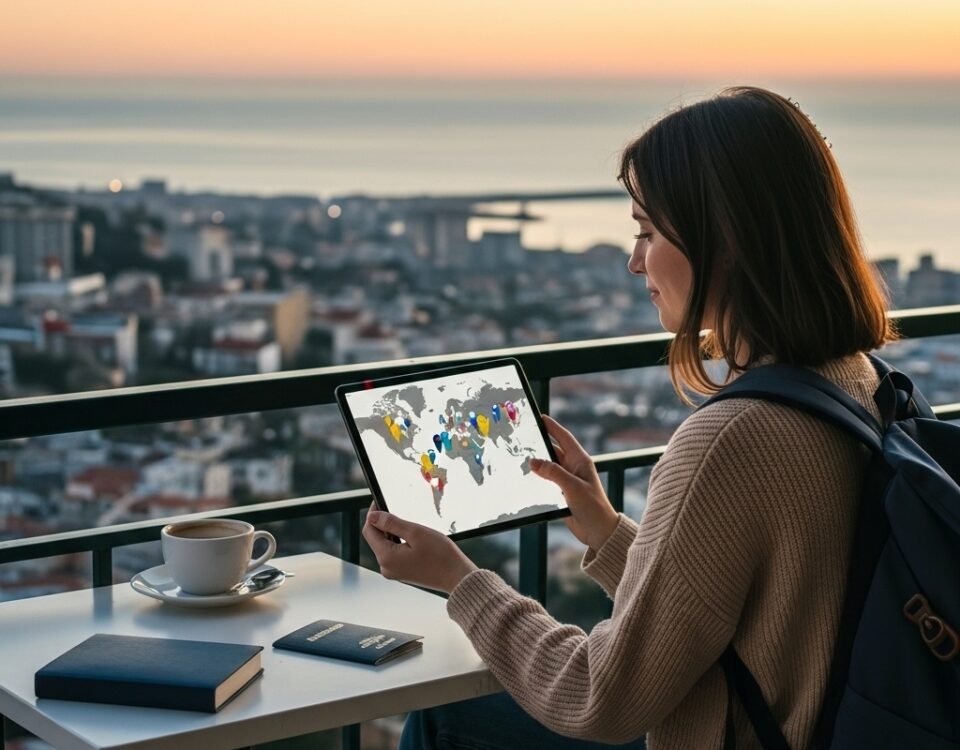You've just landed in a new country. After the plane taxies to the gate, you reach for your phone, eager to let your family know you've arrived or to look up the train to your Airbnb. But then you see it: "No Service."
This is the moment of modern travel anxiety. The immediate, frustrating hunt for a tourist SIM card kiosk, the confusing registration process, the fear of getting overcharged—it's a terrible way to start an adventure.
But what if you could step off the plane, turn on your phone, and be instantly connected?
Welcome to the world of eSIMs, the single biggest game-changer for travel connectivity. This guide will show you exactly how this technology works and how you can use it to make your travels seamless.
What Exactly is an eSIM?
Think of an eSIM as a digital SIM card that is already built into your phone. Instead of having to physically swap a tiny piece of plastic, you can download a data plan and activate it directly on your device. It allows your phone to hold multiple "SIM cards" at once, and you can switch between them with a simple tap in your settings.

The 3 Big Advantages for Travelers
Why is this a must-have tool for any digital nomad or traveler in Europe?
Instant Connectivity on Arrival: This is the main benefit. You can buy and install your European eSIM from your couch at home before you even leave for the airport. The moment your plane lands in Rome or Lisbon, you can activate your data plan and be online immediately. This was a game-changer for me on recent trips, completely eliminating arrival stress.
Unbeatable Convenience & Flexibility: Hopping from Italy to Poland? Instead of buying a new SIM card in each country, you can use a single regional eSIM that covers all of Europe, or easily switch between country-specific plans right from your phone.
Often, Smarter Pricing: For short-to-medium term trips (a few days to a month), eSIM data plans are often more competitive and transparently priced than the tourist-focused physical SIMs you'll find at the airport.
Is My Phone Compatible? (A 30-Second Check)
Most modern smartphones made after 2018 support eSIM technology. Here’s how to quickly check:
On iPhone: Go to Settings > Cellular (or Mobile Data). If you see a button that says "Add eSIM" or "Add Cellular Plan," your phone is compatible.
On Android (Samsung/Pixel): Go to Settings > Connections > SIM card manager. If you see an option for "Add eSIM," you're good to go.
How to Get Started in 4 Simple Steps
The process is incredibly straightforward.
Choose a Provider: There are many excellent global eSIM providers. Airalo and Holafly are two of the most popular and user-friendly options, offering everything from single-country to regional European plans.
Purchase Your Plan: Go to their website or app, select the country or region you're visiting, and choose the data package that fits your needs (e.g., 10GB for 30 days).
Install Your eSIM: After purchase, they will email you a QR code. On your phone, go to your cellular settings, tap "Add eSIM," and simply scan the QR code with your phone's camera. Your phone will then guide you through a couple of quick setup steps.
Activate Upon Arrival: Your plan's validity period doesn't start until it connects to a network in your destination. Once you land, just go into your settings, turn on your new eSIM, and enable data roaming for it. You'll be connected in seconds.
eSIM vs. Physical SIM: Which is Right for You?
An eSIM is perfect for:
Short-to-medium term trips (less than 3 months).
Trips covering multiple European countries.
Anyone who values convenience and instant connectivity.
A physical SIM might still be better if:
You need a local phone number for calls and texts (most eSIMs are data-only).
You are staying in one country for a very long time (3+ months) and can get a better rate with a local postpaid plan.
Your phone is older and not eSIM-compatible.
For the vast majority of digital nomads and travelers, using an eSIM is the smartest, most efficient way to stay connected in Europe. It removes a major logistical headache, giving you more time and energy to focus on what you're actually there to do: explore.
What's your experience with eSIMs? Share your favorite provider or a pro-tip in the comments below!


